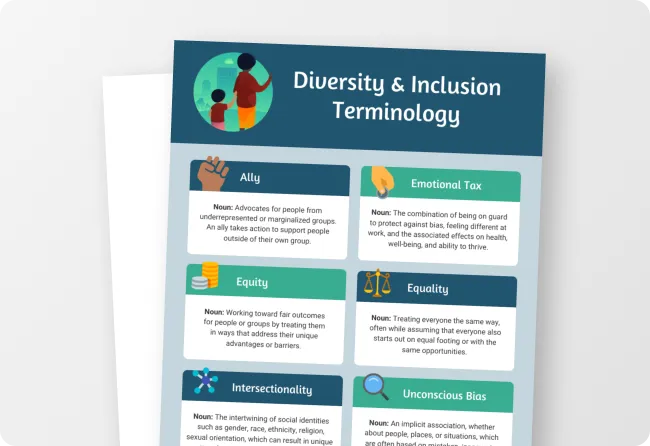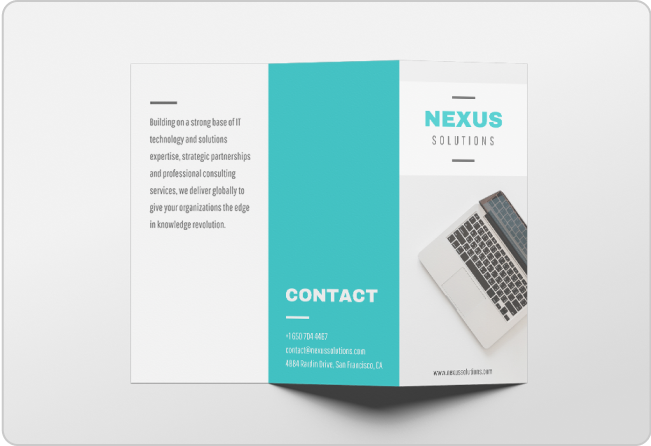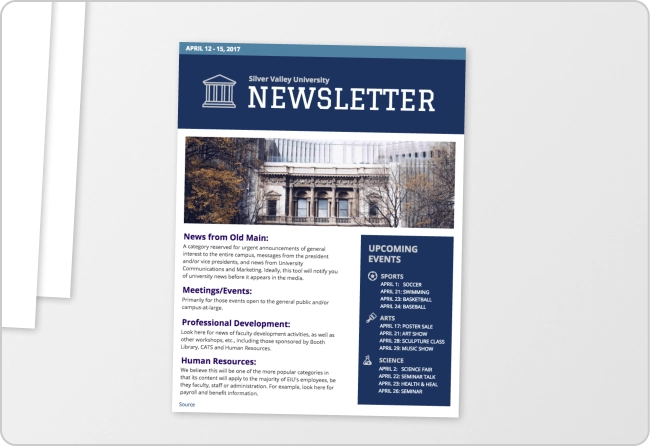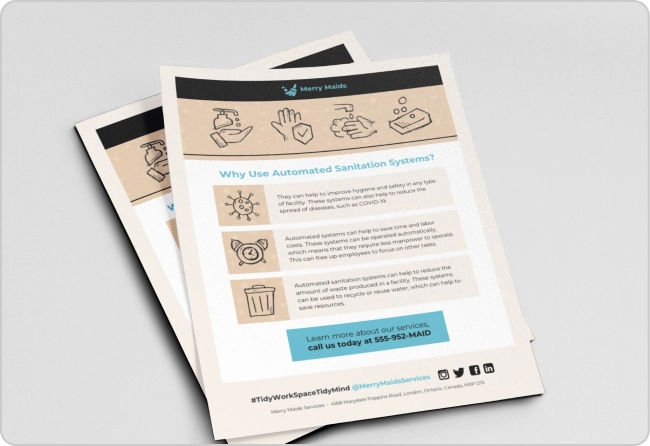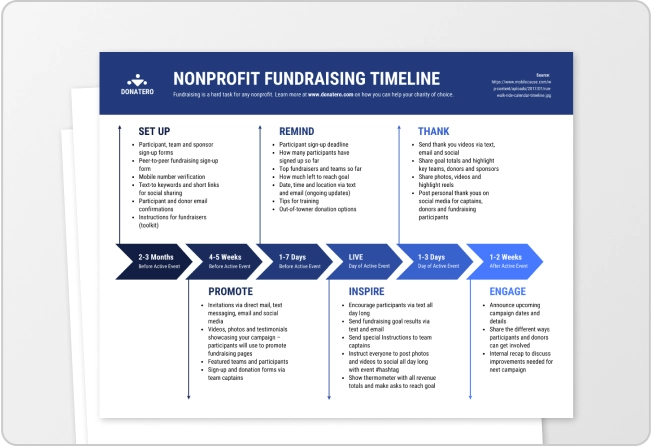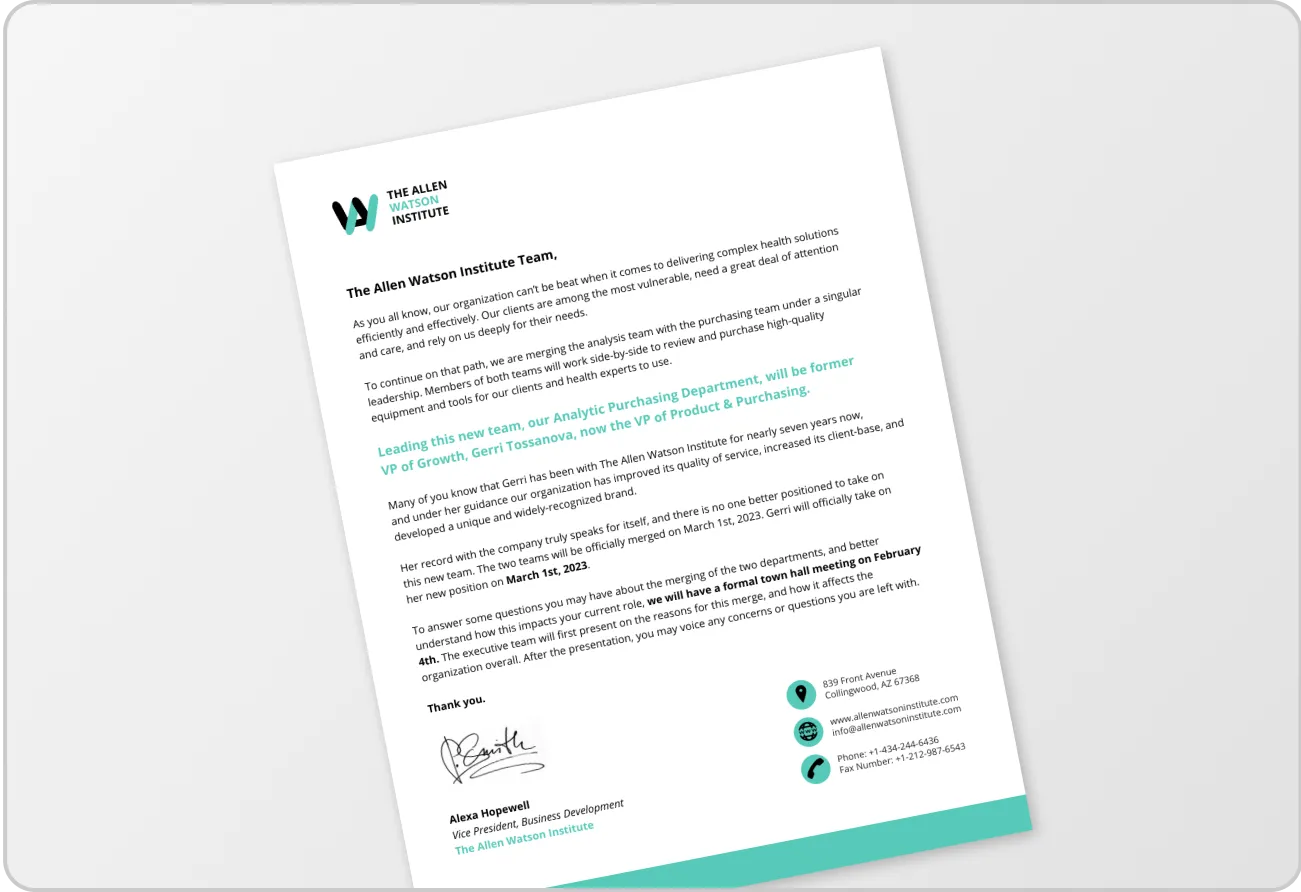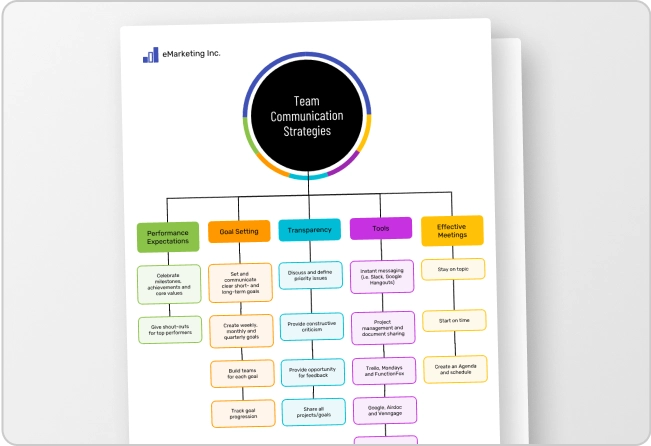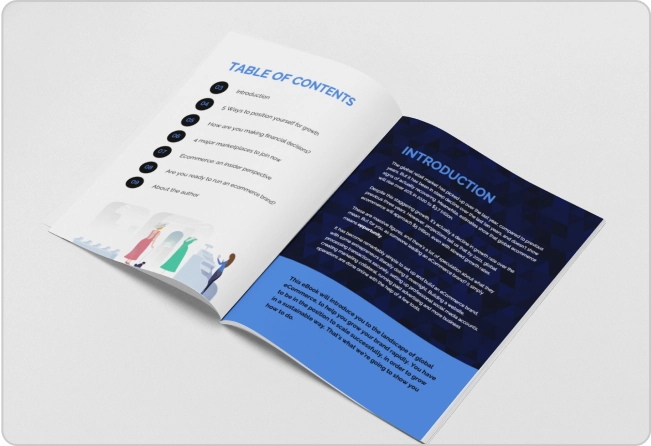
Let me guess…you’re here because you need to write a market analysis report but don’t know where to start.
You probably have more data than you need and the pressure to make it look professional.
I know this because I’ve been there. Most reports crumble under too much raw data or because they lack a clear structure. The result is often a lifeless PDF full of statistics that fail to make an impression.
Thankfully, the solution is simpler than you think. In this post, I’ll show you how to create a market analysis report from scratch, with examples and tips to make it effective.
What is a market analysis report?
A market analysis report explains who your customers are, how big the opportunity is, who your competitors are and what trends define the market. It gives you ideas about what kind of strategies to go after, how to attract investors or how to launch your products effectively.
Market analysis is a detailed assessment of your business’s target market and the competitive landscape within a specific industry.
From the Coursera blog
Think of a market analysis report like putting on a pair of night-vision glasses. You don’t have to bump your toes on the furniture in the dark anymore. You can clearly see the path ahead. It’s a tool that turns guesswork into a clear strategy.
Related: How to Write a Report: Step-by-Step Guide with Examples
How to prepare a market analysis report (Step-by-step)
Practically speaking, you can’t hash out a good market analysis report in one sitting. You have to build it layer by layer, starting with why you’re doing it and ending with how the numbers point to action.
Here’s the step-by-step process to write one from start to finish.
1. Define your purpose
Before you start collecting data, decide why you need the report. Are you testing a product idea, exploring a new market expansion or validating your business’ revenue potential for investors?
For example, a brand new SaaS startup might prepare such a report to convince its investors that its product has a fighting chance to disrupt the $10M market.
If you aren’t clear about your report’s end goals, you’ll end up drowning in irrelevant data and with zero outcomes.
Here’s a report template that clearly states the report’s goals in the introduction and provides context for why the analysis matters:

2. Research the industry
Gather credible data on market size, growth rate and trends. You can use resources like IBISWorld, Statista or government databases.
For instance, if you operate in the renewable energy sector, you can find data related to how the IEA forecasts global renewable capacity to grow by 2,300 GW between 2022 and 2027. It’s a data point that signals just how fast the industry is growing and you can later add how that ties to your organization.
When analyzing a market, it’s a good rule to add a PESTLE analysis (Political, Economic, Social, Technological, Legal and Environmental) to show how the external forces are shaping your industry.
Here’s a report template that presents the research data effectively as part of its recommendations:

3. Analyze the competition
Make sure you list out both direct and indirect competitors. Break them down with a SWOT analysis (strengths, weaknesses, opportunities and threats).
To compare your competitors, you can research free review sites such as G2, Trustpilot or Capterra. These sites can help you identify undeniable patterns or the most common complaints customers report about existing businesses in a specific domain.
An e-commerce brand, for instance, might notice Trustpilot users praising a competitor’s product selection but frequently complain about their buggy checkout process. They can incorporate that data into the market analysis report to highlight how it’s an opportunity for them to offer a better purchase experience.
The chart below compares nine products across features, pricing and support to highlight their strengths and weaknesses.
How does it help exactly? The comparison gives you a quick snapshot to understand the gaps and opportunities in the market:

Related: How to Perform a Marketing SWOT Analysis
4. Define your target market
Go beyond demographics. Include psychographics and behavioral traits. If you’re selling fitness software, your audience might be 25–40-year-olds in urban areas who value convenience and track work outs everyday.
Our recommendation: create buyer persona templates to humanize this data. You can use Venngage’s Persona Maker or try the AI Persona Generator to quickly visualize these profiles.
This template turns vague audience data into a humanized profile and makes it easier for stakeholders to visualize real customer needs and behaviors:

5. Identify market gaps
This is similar to analyzing your competition, but it goes deeper than just comparing user reviews online.
To identify gaps, you have to look for problems that no one is solving well.
You must have read about Netflix famously realizing that DVDs by mail were inconvenient compared to streaming. That gap became their growth engine. Similar stories exist with Uber vs taxi companies, Warby Parker vs overpriced eyewear companies and Airbnb vs hotel chains.
In your report, highlight areas where customer pain points are being ignored or where competitors are under-delivering. This can strengthen your positioning strategy against your competitors.
Here’s a good template that highlights underserved customer needs and visualizes market gaps:

6. Assess barriers to entry
Map out the possible challenges to your business growth.
For example, the most common challenges that cause new startups to fail are building something nobody wants, running out of cash, lacking the right team, falling behind competitors and pricing issues.
Acknowledging these barriers upfront makes your report credible and shows investors you’re realistic.
7. Create a sales forecast
Finally, turn your findings into numbers. Estimate total market potential, pricing models and sales volume. You can use methods like top-down (industry size, then slice your share) or bottom-up (unit economics multiplied by reach).
This helps you test if your idea has enough demand or profitability before you go all-in.
Tesla’s early forecasts, for instance, started small but built credibility by tying growth projections to tangible production milestones.
Want a head start to visualize this data? Choose from one of Venngage’s ready-to-use, easily customizable chart templates.
Just enter your forecast data into the chart template and plot the findings into a diagram that stakeholders can easily follow. Here’s an example template which does that:

The structure of a market analysis report
Structuring the report well ensures that your insights are easy to digest and actionable. Here’s how to build a market analysis report that gets results:
1. Executive summary
An executive summary is often your first impression. It’s where you articulate the biggest problems, highlight your solution and grab your readers’ attention before they even consider scrolling.
A 2025 Insight7 guide recommends that an executive summary should distill complex information into concise, digestible insights. Otherwise, the report risks being overlooked by busy decision-makers.
2. Introduction and purpose
Start with a short introduction that invites the reader, such as by mentioning what the report covers and why it matters. Then, clarify what you’re answering before diving deeper.
Whether it’s analyzing a growing market, validating demand or preparing for investment, articulate your purpose to make the report focused and outcome-oriented.
Netquest puts it well:
A well-defined objective acts as a compass that guides the entire research process, from data collection to analysis and interpretation of the results. Without a clear objective, it’s easy to get lost in a sea of data without knowing what information is truly relevant to the problem at hand.
3. Methodology
Your methodology is the foundation of trust. Always explicitly spell out your data sources, like industry reports, interviews, surveys and PEST analysis.
How to trust a report that doesn’t show how or from where it gathered the data? It’s hard to take such a report seriously.
But when you attribute your research, readers will automatically develop confidence in your findings.
As this Academy of Management Annals research notes:
The more explicit, open and thorough researchers are about disclosing each of these choices, judgment calls and decisions, the greater the degree of methodological transparency… Low methodological transparency has a detrimental impact on the credibility and trustworthiness of research results.
4. Key findings
Cut the noise. Share only the insights that matter: growth rate, competitive gaps, customer pain points. Venngage charts might translate dense data into clarity, helping readers absorb what drives your argument.
Visuals can help here, too. Use Venngage to visualize complex data into charts to ensure your findings are accurate and easy to process. When decision-makers can see the “why” behind your numbers, your report becomes persuasive.
5. Market opportunities and gaps
This is a section for you to highlight where demands are unmet or competition is weak. Call out the gaps in the market that your business can address.
Airbnb, for example, identified a gap in affordable short-term lodging, turned unused living spaces into commercial properties and built an entire category around it.
A study from FasterCapital shows companies that conduct market gap analysis are more likely to meet their strategic objectives than those that don’t.
6. Barriers and risks
Strong business reports don’t shy away from acknowledging potential challenges. Acknowledge the factors that might slow you down, whether it’s strict industry regulations, high upfront capital or unbeatable incumbents with deep pockets.
Did you know that 38% of startups fail due to running out of cash, while 18% cite regulatory hurdles as a top reason for failure?
CB Insights report
Highlighting risks upfront shows stakeholders that you’ve done your homework and thoroughly understand the business landscape.
7. Recommendations
Avoid generic conclusions in your recommendations. People want specific insights they can act on.
For example, if it’s a market analysis report about electric two-wheelers in Southeast Asia, specifically mention who to target, when and how.
Instead of saying “expand to new markets,” say “launch a pilot in Tier-2 cities in Q2 and target dealers already selling EVs.”
Instead of “improve riding experience,” suggest that the audience “host quarterly test drives to boost adoption among urban commuters.”
The goal is to connect your analysis to a clear set of next steps, backed by data. Specificity builds confidence and helps decision-makers move from ideas to execution without guesswork.
This template lays out recommendations and next steps, guiding stakeholders on exactly what to prioritize:

8. Appendices and references
I like to think of appendices as your data vault. It’s where you store all your raw data sources, citations, survey responses or interview transcripts.
Cite every source possible to build credibility.
Appendices enhance the credibility and comprehensiveness of a document by providing detailed data, visuals or other materials that allow readers to explore the topic in greater depth.
From ResearchMethod.Net
Keep the main report concise and focused on insights, but let stakeholders who want to dig deeper have access to everything that backs your conclusions. Well-organized appendices also make updates easier and show that your analysis is rigorous, verifiable and professional.
Related: 17 Types of Reports for Reporting and Decision Making
Why do you need a market analysis report?
A market analysis report is the backbone of smart business decisions and often a safety net against blind risk. Here’s why it matters:
1. Decision-making and risk reduction
Good decisions come from clear data. A market analysis helps you assess if a new product is viable, if its pricing aligns with customer expectations or if expanding to a new territory is worth the risk.
A well-structured report can help document such data points before you invest significant time and money.
2. Identifying market gaps and opportunities
Markets are crowded, but few players satisfy every need. For example, Olipop entered the $55B soda market with low-sugar, fiber-rich drinks and targeted health-conscious consumers overlooked by Coca-Cola and PepsiCo.
A growing number of businesses use market analysis to find similar loopholes, whether it’s underserved geographies, niche demographics or overlooked pain points. Market analysis reports let you quantify demand and identify unfulfilled market needs to give your business a clear edge.
3. Convincing investors or stakeholders
Contrary to popular belief, investors aren’t impressed by pretty-looking pitch decks alone. They want proof that the market is real and that you understand it better than anyone else.
Market analysis reports give you that proof with competitor benchmarks and growth projections. A strong report shifts your story from “we think” to “we know,” and that builds credibility.
Startups should demonstrate that their solution addresses a significant market gap, supported by research and data. Showing a detailed understanding of the Serviceable Addressable Market and Serviceable Obtainable Market further solidifies credibility.
Aastha Thilwal, from Eximius Capital Ventures blog
4. Gaining competitive advantage
Knowing the market is only half the game; staying ahead is the other. A market analysis shows you how the competitors are stacked up, where they are leading or where they are struggling.
Analyzing customer reviews of rivals can uncover frustrations you can directly address and turn them to your advantage. Here’s an example from the real world: Freshworks was born when its founder read a frustrated customer’s online complaint, realizing most SMBs lacked affordable, efficient customer service solutions.
Tips for writing an effective market analysis report
A market analysis report is only as good as its execution. Even the most thorough research can fail to make an impression if it can’t present the insights in a way that readers can quickly understand and act upon.
Here are five practical tips to make sure your report is effective:
1. Keep it short with bullet points
Most executives and decision-makers don’t have time to go through long walls of text. Using bullet points forces you to distill complex information into its most essential elements.
Instead of burying insights in long paragraphs, bullets create scannable takeaways that readers can grasp at a glance. This also ensures you cut fluff and prioritize clarity over jargon.
2. Keep it clear and concise
Clarity beats cleverness when it comes to…any form of writing. Write your report as if you’re explaining the findings to a colleague who has no prior context.
Avoid overloading sentences with technical jargon or vague generalizations. If your reader has to re-read a sentence to fully understand it, you’ve failed to achieve clarity in your message.
Here’s a simple test to ensure clarity: can someone outside your industry understand the insight in one read? If not, rewrite until you’re sure they can.
3. Use visuals
Numbers are powerful, but they can be pretty overwhelming without visual aids. We have reported in our content marketing statistics blog that using visuals like charts, graphs, photos and color can boost readership by up to 80%.
That’s because visuals can turn complex trends into patterns the human brain can process easily. A graph showing revenue growth tells a stronger story than a paragraph describing it.
Use visuals to highlight the “so what” of your findings: where the opportunity lies, how risks trend over time or how you compare with competitors.
But remember, visuals should complement your narrative, not replace it. Bad infographics and charts can be as confusing as a cluttered paragraph.
Related: 10 Do’s and Don’ts of Infographic & Chart Design
4. Stay objective and data-driven
A market analysis report is not the place to enforce your personal bias or opinions. Investors and executives want cold, hard facts, not speculations based on gut feeling.
Back up every claim with verifiable data, cite your infographic sources and, wherever applicable, make a clear distinction between proof and interpretation.
Accommodate opposite perspectives where necessary (e.g., risks as well as opportunities) so your report comes across as fair and credible. The more objective your analysis, the more weight your recommendations will carry.
5. Make recommendations actionable
The best reports don’t just provide conclusions. They offer practical, easy-to-follow tips and what readers should do next.
Avoid generic conclusions like “the market is growing” or “competition is strong.” Turn your report insights into actionable steps your reader can take, such as “target mid-sized manufacturers in Southeast Asia” or “invest in mobile-first marketing to capture Gen Z buyers.”
Actionable next-step recommendations can bridge the gap between research and execution. It makes your market analysis report a powerful tool that influences change in the real-world rather than just academic literature.
Example of a market analysis report
To make this more tangible, let’s look at a hypothetical example. Let’s say you’re tasked to prepare a market analysis report for a mid-sized electric bike company entering the Southeast Asian market.
Based on everything we have discussed before, here’s how you might structure your findings:
Executive Summary
- The Southeast Asian e-bike market is projected to grow at a 12% CAGR in the next 5 years.
- Key drivers of adoption: Rising fuel costs and urban congestion.
- Potential risks: Price sensitivity and regulatory frameworks.
- Recommendations: Produce affordable commuter e-bikes under $800.
Market overview
- Market size (2025): USD 1.5B, expected to reach USD 2.65B by 2030.
- Primary growth hubs: Urban centers like Jakarta, Bangkok and Ho Chi Minh City.
- Target demography: 65% of buyers are 21–35 years old, price sensitive and environment-conscious.
Competitor analysis
- Currently, three dominant players hold 55% market share.
- Existing gaps: Currently, brands focus either on low-cost or high-premium.
- Distribution opportunities: Local scooter dealerships are open to new partnerships.
Opportunities
- Buyers want affordable e-bikes for daily commutes.
- Expansion through rental models in crowded cities.
- Partnering with ride-hailing apps to maximize adoption.
Risks and challenges
- Import tariffs on batteries could inflate costs.
- Consumer financing is underdeveloped in rural areas.
- Strict government policies and a lack of subsidies for EVs.
Recommendations
- Position e-bikes at <$800 with financing options.
- Encourage local assembly to reduce tariff costs.
- Build partnerships with scooter dealers and ride-hailing platforms.
Here’s what this report looks like when I fed the above data into Venngage’s AI Report Generator:

You’d assume this to be a fictionalized, anonymized market analysis…until you realize it isn’t. Recent market intelligence reports on Vietnam’s e-bike sector echo many of these themes.
Let’s take a quick look.
Case study: Vietnam e-bike market
According to the Mordor Intelligence report, Vietnam’s e-bike market is projected to grow at a CAGR of 3.86%, reaching USD 292 million by 2029.
This growth is mostly triggered by rising fuel prices, while the most common challenges include battery costs and limited infrastructure.
The report shares several things that we discussed in earlier sections, such as industry trends, competitive analysis and several charts and visuals to simplify the findings:

Tools and templates for creating a market analysis report
Doing the research for a market analysis report can take a really long time. But putting it together in a logical, visually-appealing format shouldn’t feel like a punishment.
That’s where tools and templates can help. They bring structure, speed and clarity so you spend less time designing it.
Tools that support real-time collaboration, version control and shared workspaces let you create reports with your team. This often speeds up feedback loops and aligns everyone rapidly.
Similarly, templates help you set a clear, consistent framework at scale.
Take Venngage’s report templates, for instance. They can help you simplify everything from evolving marketing trends to competitive analysis with built-in features that cut the time by half.

Venngage takes away the hassle of formatting each page, fixing color contrast or aligning reports with your brand style so you can focus on building a strong narrative.
Here’s an example of a market analysis report template that’s ready-to-use for the most part, but easily customizable for you to add your copy and findings:

Common mistakes to avoid
Even the best market analysis reports fall flat if you don’t think through the basics.
The difference between a document that drives strategy and one that gathers digital dust often comes down to avoiding a few common missteps:
1. Relying on outdated data
Using last year’s numbers to inform this year’s strategy can be as misleading (and risky) as using old medicines to treat new diseases.
For example, citing pre-pandemic travel stats in a 2024 report on consumer mobility trends in 2026 would misguide product decisions.
In fact, a Bazaarvoice study shows that consumers’ preferences change rapidly, mostly driven by value and convenience. A strong report makes clear when the data was collected and contextualizes how relevant it still is.
2. Skipping competitor analysis
It’s fine to highlight rising customer demand, but you must also account for competitors in the market.
Imagine launching a new coffee brand, only to realize later that two global giants have just opened stores in the very markets you’re targeting.
Your total addressable market may look promising on paper, but without analyzing competitor pricing, distribution and positioning, your entry strategy is already compromised. A good report lists out all possible competitors, highlights their strengths, weaknesses and the gaps you can realistically fill.
3. Overloading with irrelevant stats
A rookie mistake people make in market reports is to stuff them with every data that they come across. However, more numbers doesn’t mean more credibility.
If you’re evaluating the SaaS CRM space, do readers really need a detailed breakdown of CRM market share from 2010? Probably not.
Effective analysis is selective. Every data point should connect to the core, immediate problem: What does this mean for our business decision right now?
4. Ignoring actionable recommendations
Too many reports end with “market is expected to grow 8% CAGR” and stop there. A report without application conclusions can be frustrating for your stakeholders.
A good report translates findings into clear next steps: enter this market in Q4 with a mid-tier product line, adjust pricing to undercut the second-largest competitor or double down on Gen Z in Tier-2 cities because their adoption curve is steeper. Without those recommendations, you lead your reader wondering: So what?
FAQ: Market analysis report
1. What are the 5 C’s of marketing analysis?
The 5 C’s of a marketing analysis are Company, Customers, Competitors, Collaborators and Context. They help businesses evaluate internal strengths, customer needs, competitive threats, partnerships and broader climatic factors.
2. What are the 4 P’s of market analysis?
The 4 P’s of market analysis is the same as the 4 P’s of a marketing mix: Product, Price, Place and Promotion. In market analysis, they highlight product fit, pricing strategy, distribution channels and promotional tactics.
Put your market analysis to work
Running a business without market insights is like building your product in the dark. It’s risky, costly and highly unsustainable.
Now that you have a framework to build a market analysis report that turns scattered data into clear strategies, put this into practice to make smarter decisions.
Want to see how easy it is to create a market analysis report? Try Venngage’s customizable templates to turn your raw research data into a professional, presentation-ready report.




























